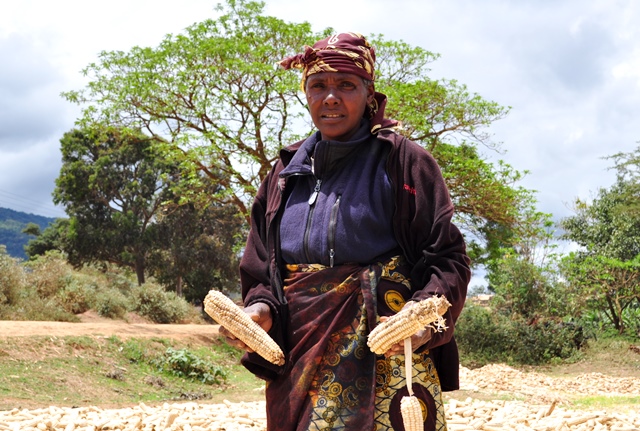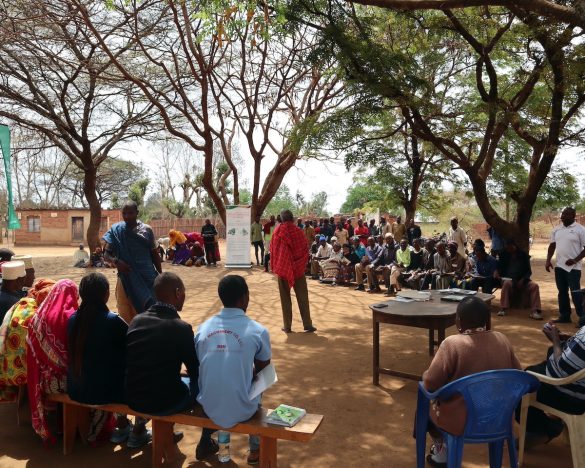High levels of mycotoxins detected in Babati pose health risk to human and livestock health in Tanzania

Communities in Tanzania and the region could unknowingly be exposing themselves to potential health problems as a result of consuming foods that are contaminated with high levels of mycotoxins – poisonous chemicals that are produced by certain types of fungi and which are harmful to both humans and livestock.
A study by the Africa RISING research team in the three villages of Long, Seloto and Sabilo in Babati district, found high levels of aflatoxins in maize – a key staple in the country – in more than 40% of samples collected. Exposure to high levels of aflatoxins over a long time can cause liver cancer and in cases of acute poisoning can lead to death.
In all three villages, concentrations of fumonisin, another mycotxin which can cause stunting in children among other health effects were found to be higher than both the European Union (EU) and Tanzania Drug and Food Administration(TFDA) regulatory limits of 1 µg/g. Seloto village had highest levels (3.8 µg/g) compared to both Long (0.3 µg/g) and Sabilo (1.5 µg/g) villages.
The study also showed low levels of awareness among the farming communities which increase the risk of exposure to mycotoxin in the population and economic losses as a result of failing to comply with stringent trade regulations.
The research team said that there are several factors that lead to the high mycotoxin levels at farm households. These include erratic rainfalls, high humidity and temperature and a general lack of public awareness about mycotoxins and how to reduce contamination.
The study was carried out to quantify mycotoxins contamination of maize and beans at harvest and postharvest in the three villages, Long, Seloto and Sabilo, which represent three different agro ecological zones.
The beans were however, found to have low contamination by both TA and TF at levels that could not result in adverse health risks. Levels of total aflatoxin were lower compared to limits set by FDA/TFDA and EU of 4ppb and 10ppb in the three villages.
Furthermore, it was also found that, mycotoxin contamination of maize and beans increased with storage duration. Sorting was one of the practices that reduce aflatoxin and fumonisin.
These findings underscore the need for further studies on factors contributing to differential fumonisin levels between the villages, cost-effective mitigation strategies and community sensitization on health risks associated with mycotoxins.
Mitigation strategies include promotion of good pre and post harvest practices including timely planting, crop rotation, good land preparation, storage under good structures, sorting and removal of contaminated cobs.
Story by E.Koyano, F.Ngulu and G.Ndibalema




